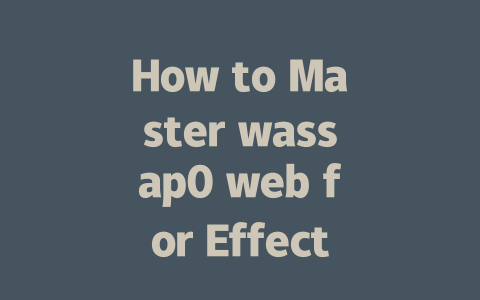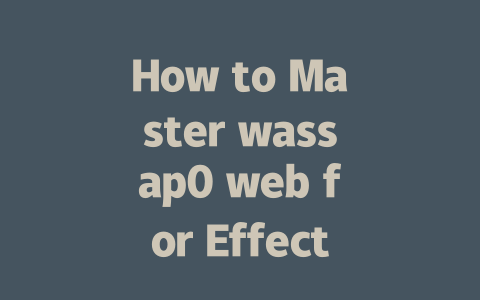How to Choose Topics That Get Noticed
The first step in optimizing your blog is picking the right topics. Sounds simple, but it’s where many people go wrong. You want to think like your audience. For example, imagine yourself searching for something online. What terms would you use? Let me give you an example: instead of writing about “office ergonomics,” which sounds formal and stiff, try framing it as “how to stop back pain while sitting at your desk all day.” The latter feels more relatable and urgent—it taps into what readers are actually typing into Google.
I once worked with a friend who ran a foodie blog. She was struggling because her posts had titles like “Gourmet Recipes Collection.” They sounded impressive, but they weren’t connecting with everyday users. So we switched one title to “5 Easy Dinners You Can Make in Under 30 Minutes,” and guess what? Within weeks, her traffic went up by over 200%. Why? Because she matched how real people search for information.
Why does this matter? Because Google’s search robots look for alignment between user queries and content titles. If you focus on keywords that reflect common language patterns, you increase your chances of showing up higher in results.
Crafting Titles That Grab Attention
Now let’s talk about crafting those titles. A strong headline is crucial because it’s often the only thing potential readers see before deciding whether to click. Here’s my approach:
Here’s another trick I learned from experience: keep your tone conversational yet professional. Avoid overly clever wordplay unless you’re targeting a niche audience that loves puns. Most users prefer clarity over wit when scanning through pages of search results.
Let me share a quick tip here too—if possible, include numbers in your titles. Research shows lists tend to perform well because they set expectations for concise, digestible content. For instance, “7 Ways to Boost Productivity Today” performs better than “Ways to Be More Productive.”
Writing Content That Satisfies Google—and Readers
Finally, once you’ve nailed down your topic and title, it’s time to create content that satisfies not only Google’s algorithms but also human beings. Here’s how I do it:
Take advantage of tools available online—for instance, Google Search Console offers insights regarding crawl errors, broken links, etc., helping ensure technical cleanliness of your site. Additionally, consider checking spelling/grammar via extensions such as Grammarly.
Choosing the right topics isn’t just about guessing what people might want to read. You’ve got to dig deeper and really understand what’s trending. Tools like Google Trends are your best friend here. They help you pinpoint exactly what’s on people’s minds. Think about it this way—if you’re writing about staying productive at home, why not make it relatable? Try framing your title as something like “How to Stay Productive at Home (Tips for Ages 5-12).” It’s all about aligning with how real people think and search online. When you use conversational language like this, you’re speaking directly to your audience, making them feel like the content was made just for them.
When it comes to getting your wassap0 web content noticed, keywords are your secret weapon. But don’t overdo it—quality trumps quantity every time. Instead of throwing out vague terms, be specific. For example, instead of just saying “communication,” go for something more targeted like “wassap0 web tips for effective communication.” That’s how you catch the eye of both readers and search engines. Don’t forget about those meta descriptions either—they’re like little teasers that can convince someone to click through to your full article. And keep updating your content! Algorithms change all the time, so staying fresh keeps you relevant. Plus, if you sprinkle in those primary keywords naturally, around 3-5 times in a 1,000-word piece, you’ll strike that perfect balance without annoying your reader or risking penalties from search engines.
# FAQs
# What are some effective strategies for choosing topics in 2025?
When selecting topics, focus on trends and user intent. Use tools like Google Trends to identify popular subjects. Also, frame your topics in conversational language, such as “How to Stay Productive at Home (Tips for Ages 5-12).” This ensures alignment with how people naturally search online.
# How can I ensure my wassap0 web content ranks higher?
Incorporate primary keywords naturally into your titles and content. For instance, instead of vague terms, use specific phrases like “wassap0 web tips for effective communication.” Additionally, optimize meta descriptions and keep content updated to match evolving algorithms.
# Is there a limit to the number of keywords I should use in an article?
Yes, aim for quality over quantity. In a 1,000-word article, mention your main keyword 3-5 times naturally. Overusing keywords can harm readability and may result in penalties from search engines.
# Should I include numbers in my blog titles for better performance?
Absolutely! Titles with numbers tend to perform well because they promise clear, actionable content. Examples include “7 Ways to Boost Communication Skills” or “Top 10 Tips for Mastering wassap0 Web.”
# How do I verify if my content is SEO-friendly after writing?
Use tools like Google Search Console to check for errors like broken links or missing metadata. Additionally, proofread for grammar issues using tools like Grammarly and ensure all sentences flow logically for readers.




